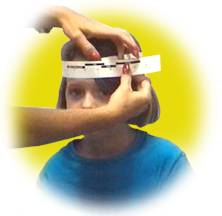Balance Bike Safety
1. These bikes are so compact that many parents allow younger kids to ride in carpeted basements or around the house when first learning. It is helpful for new younger riders to start on open grassy areas or dirt paths if available while first getting use to their balance bike and gaining some confidence and building their skills.
2. Consider having your kids wear stable footwear such as closed-toed sandles or tennis shoes while riding their balance bike. Kids should refrain from riding in flip flops or barefoot to protect their feet since their feet are used frequently for balance practice, starting and stopping.
3. Don't forget the helmet – this is one of the most important rules of bike riding– even if your child puts up a fuss or complains at first. The critical moment is that first time and to hold your stance! No helmet, no bike. They will get use to it over a short amount of time and if they know they have to wear the helmet in order to ride (or skateboard, ride a scooter, ski, ect..) they will soon accept it and gladly wear it. Many states have helmet laws for kids. Check your state laws to avoid a fine!
Helmet sizing
It is important to get the right size helmet for your child. Get a helmet that fits now and doesn't move around on their head. All Helmets sold and imported into the US must meet a series of helmet safety standards. All helmets we sell show the circumference for measuring a good fit. Measure around the head – one inch above the ear and right above they eyebrow. This should give you the inches, then you can find the right size helmet.


4. Balance bikes are meant for sidewalks, driveways, wooded trails, and areas such as parks that are set back from the street and with adult supervision. Also stay clear from areas with steep hills without very close supervision where a child may lose control and run into traffic. Teach your children that riding a bike is a big boy/girl task and they need to follow the special rules in order to ride (such as listening to riding boundaries and wearing helmets)
5. When your child is starting out, it is best to not hold the bike, but lightly support your child (only if needed such as children under 3) by holding on to the back of their jacket or shirt. This will give them control and feel of the bike and what they need to do to support it. Children will pick up on this very quickly! Even the younger ones.
6. Don't rush you child to sit on the seat or to run and glide right off the bat. This all comes with practice and at their own pace and depends on their ability and age. Young children usually will stand over the bike and walk it at first, maybe even for a week or more. The next skill will be sitting and scooting the bike forward.
Only after feeling comfortable handling the bike in this manner will they start picking up speed. The last stage of learning will be gliding and picking up their feet. This process can take days to months – so don't worry! As long as your child shows interest, they are learning and having fun.
The great thing about these bikes is that they are going to be around for a long time. Most kids will go back to their balance bike for years until they are well into riding a pedal bike. So if they get interested in other things for awhile – even months – don't get rid of the balance bike! They will want it and need it to get the skills for a pedal bike – and that day WILL come!


